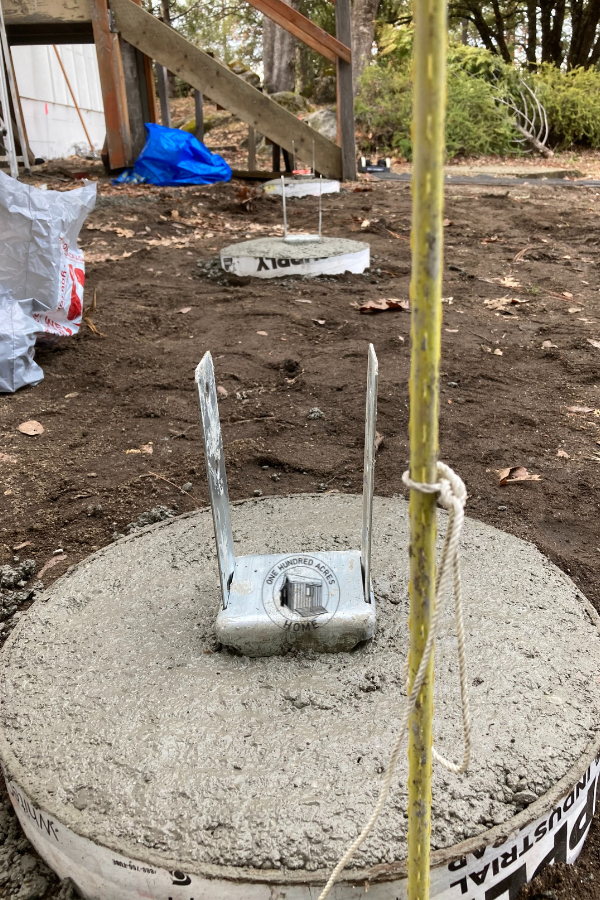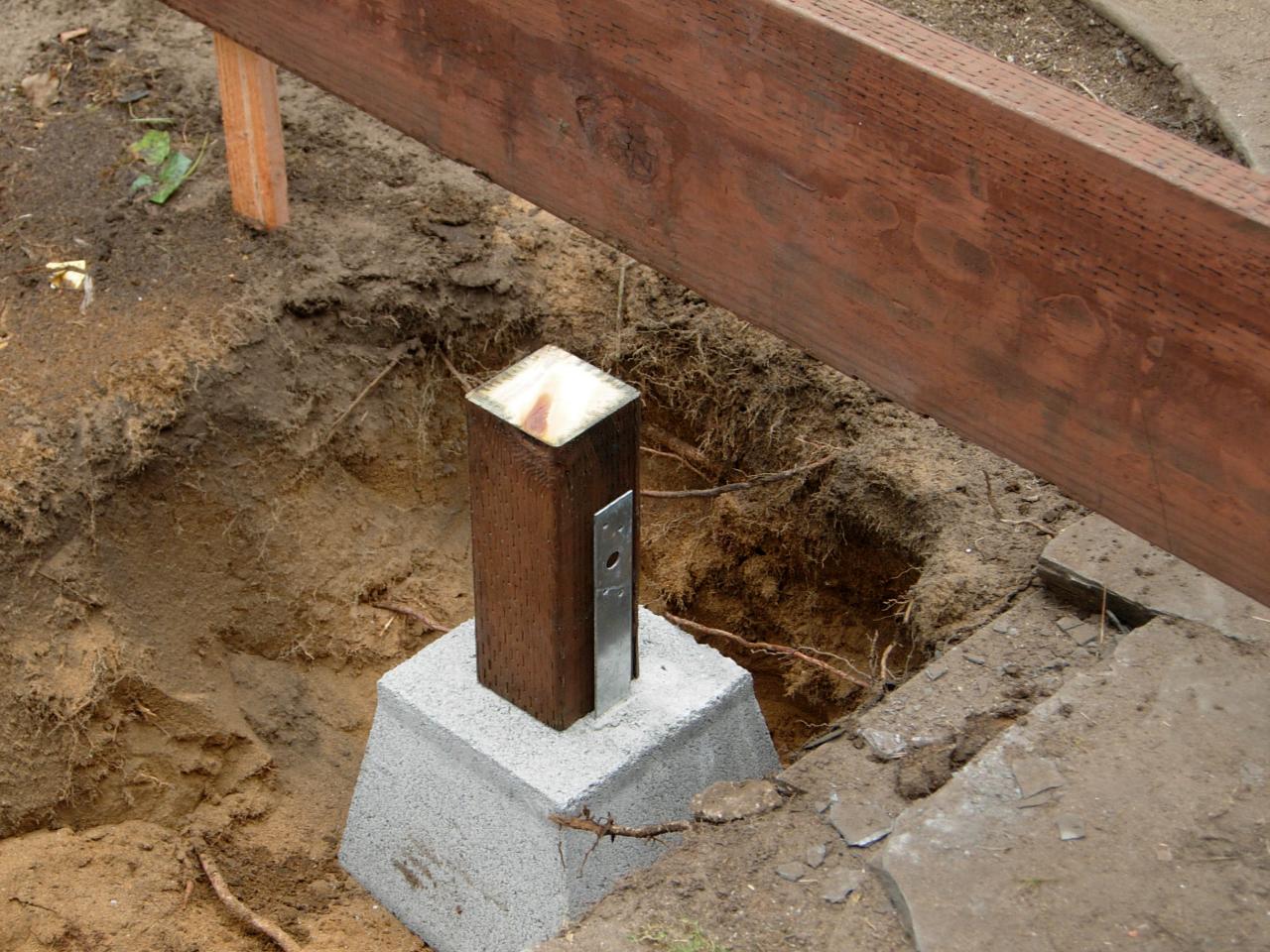Choosing the Right Deck Footings for Security and Durability
When it comes to developing a deck, one of one of the most essential choices you will make is selecting the appropriate footings for stability and resilience. The longevity and safety of your deck depend heavily on the kind of grounds you choose, as they offer the essential support and stability to stand up to the examination of time. With a myriad of choices available, it can be overwhelming to identify which grounds are best fit for your particular demands. In this discussion, we will check out the numerous kinds of deck footings, consider the vital aspects to consider when making a choice, and look into the advantages and disadvantages of various options. By the end, you will certainly have a clearer understanding of the selections available and be better equipped to make a notified choice for your deck job.
Kinds Of Deck Footings
These footings consist of a cylindrical opening filled with concrete, which provides a solid structure for the deck messages. Concrete pier grounds are fairly easy to install and use outstanding stability, making them a popular selection for many deck jobs.
An additional sort of ground is the helical stack ground. Helical heaps are steel shafts with helical plates affixed to them. These grounds are set up by screwing them into the ground, which creates a protected foundation for the deck. Helical pile grounds are perfect for areas with challenging dirt problems, as they can be set up in nearly any type of kind of soil. They likewise permit simple modification and progressing of the deck if required.
Conversely, some building contractors choose precast concrete footings. These grounds are made from resilient concrete and come in numerous sizes and shapes to suit various deck styles. Precast concrete grounds are practical to install and give a steady base for the deck framework.
Lastly, another alternative is the post-in-anchor footing system. This kind of footing entails driving a steel anchor right into the ground and attaching it to the deck post. It uses adaptability in terms of positioning the deck blog posts and is ideal for decks with lightweight frameworks.
When picking the best sort of deck footing, it is crucial to take into consideration variables such as dirt conditions, deck lots, and local building regulations (Deck Footings). Consulting with a professional specialist or architectural engineer can assist ensure the proper footing is selected for a secure and risk-free deck
Elements to Take Into Consideration When Selecting Grounds
When picking the appropriate grounds for a deck, it is essential to carefully think about numerous aspects such as soil conditions, deck load, and adherence to neighborhood building ordinance. These elements play a considerable duty in making sure the stability and toughness of the deck framework.
Among the key aspects to think about is the soil conditions. The kind of dirt on which the deck will certainly be constructed figures out the kind of grounds required. Decks developed on sandy or loose soils may call for much deeper footings to offer appropriate assistance and prevent settling. On the other hand, decks built on clay or large soils might need grounds that can fit the soil's tendency to broaden and agreement.
Another essential variable is the deck lots. The weight of the deck, including the materials used and any potential real-time tons such as furniture or gatherings, need to be thought about when picking grounds. The grounds have to be developed to bear the weight of the deck and distribute it evenly to avoid any type of architectural concerns or failures.
Finally, adherence to local building regulations is paramount. Building ordinance vary from area to area, and it is vital to adhere to the details requirements set by the regional authorities. Deck Footings. These codes ensure that the deck is developed securely and meets the necessary standards for structural honesty and load-bearing capacity
Concrete Grounds: Benefits And Drawbacks

Concrete footings provide numerous advantages and downsides when utilized as the foundation for a deck. On the favorable side, concrete grounds supply exceptional stability and longevity.
One more advantage of concrete grounds is their flexibility. They can be poured into different sizes and shapes to accommodate numerous deck layouts and arrangements. Concrete grounds can be personalized to fit the certain requirements and requirements of the deck structure.
Nevertheless, there are also some disadvantages to making use of concrete grounds. One major drawback is the price and labor included in their installation. Concrete grounds need excavation and commonly need the support of hefty equipment. This can enhance the overall price of the deck task and may require specialist help.

Helical Piers Vs. Sonotubes: Which Is Much better?
In taking into consideration the foundation choices for a deck, the contrast between helical piers and sonotubes is critical in determining the superior choice. Helical piers, also referred to as screw piles, are steel shafts with helical plates attached to them. They are twisted into the ground utilizing hydraulic equipment, supplying a steady and sturdy foundation for the deck. On the other hand, sonotubes are round types made of cardboard or fiber material that are filled up with concrete. They are positioned in a hole dug right into the ground and supply assistance for the deck.
When it involves security and toughness, helical piers have the top hand. The helical plates on the piers develop a solid hold with the soil, avoiding any activity or moving of the deck. This is look at these guys specifically useful in areas with unpredictable or moving soil problems. Sonotubes, on the other hand, count exclusively on the concrete filling up for security, which might not offer the very same level of strength and resistance.
In terms of installation, helical piers are reasonably simpler and faster to install contrasted to sonotubes. The hydraulic machinery made use of to twist the piers into the ground makes certain a quick and efficient Read Full Article process. Sonotubes, on the other hand, require excavating holes and pouring concrete, which can be lengthy and labor-intensive.
In addition, helical piers are an even more versatile choice. They can be made use of in various soil conditions and can be readjusted or enhanced if needed. Sonotubes, on the various other hand, might call for additional assistance, such as rebar, in certain soil problems or areas with high lots requirements.
Selecting the Right Footings for Your Deck's Measurements
For optimal structural stability, it is necessary to thoroughly pick the appropriate footings that align with the dimensions of your deck. The dimensions of your deck, including its size, size, and elevation, play a substantial role in identifying the type and size of footings required.
When selecting grounds for your deck, it is necessary to consider the load-bearing capacity of the dirt. The weight of the deck, incorporated with the weight of any kind of furnishings or individuals on it, puts in a considerable force on the footings (Deck Footings). For that reason, it is critical to pick grounds that can appropriately sustain this weight without sinking or changing gradually.
Bigger decks with higher measurements need larger footings to provide adequate security and support. The form of the grounds, whether they are round or square, depends on the design and format of the deck.
Final Thought
Finally, picking the ideal deck footings is crucial for guaranteeing stability and resilience. Factors such as the type of footings, the deck's measurements, and the pros and cons of various choices should be considered. Concrete grounds provide strength and longevity, however might be more time-consuming and expensive to mount. Helical piers and sonotubes have their very own advantages and disadvantages. Inevitably, picking the ideal grounds for your deck's particular needs is necessary for a resilient and effective framework.
These grounds consist of a cylindrical hole loaded with concrete, which offers a strong structure for the deck articles. Concrete pier footings read the article are fairly very easy to install and supply exceptional stability, making them a preferred choice for numerous deck projects.
Precast concrete grounds are practical to mount and offer a secure base for the deck structure.
It uses adaptability in terms of positioning the deck messages and is ideal for decks with light-weight frameworks.
Concrete grounds offer a number of benefits and disadvantages when used as the structure for a deck.